
| Manufacturer: | Economy Lighting Limited |
| Model: | Unknown - PAR38 Halogen Retrofit |
| Application: | Mains Retrofit |
| Wattage: | 35W |
| Diameter (max): | 120mm |
| Length: | 140mm |
| Tube Length: | N/A |
| Bulb/Tube material: | N/A |
| Colour Temperature: | Dependent on lamp |
| Peak output wavelength: | N/A - Broadband emission |
| Total light output: | Dependent on lamp |
| Rated lifetime: | Dependent on lamp |
| Cap: | E27 |
| Operating voltage: | 230V AC |
| Operating current: | Dependent on lamp |
| Warmup/restrike time: | None |
| Cost (original): | Unknown |
| Place of manufacture: | England |
| Date of manufacture: | Unknown |
| Current Status: | Working |
At first glance you might think this is in the wrong section, that big black plastic base looking like something you'd expect to find on an early CFL...look a bit closer however and you'll find that this is actually something rather more unusual, and quite interesting.
When CFLs were in their infancy, a clever idea which was tried out (I believe Thorn were first off the mark with it) was to sell ballast units which plugged straight into a normal lamp holder with replaceable lamp units. While these plug in retrofits didn't really ever gain a major market foothold, the principle of the fixed ballast and disposable tubes did, and is used in a lot of new installations to date. This however appears to be a similar idea to the old retrofit CFLs...but with a halogen incandescent flavour.
The resemblance of this lamp to a PAR38 reflector lamp is less than coincidental. PAR38 lamps are horrendously expensive for what they are, even when bought in bulk. This unit appears to have been designed to allow the same role to be filled by relatively cheap 12V MR16 halogen lamps without any need for alterations to the power supply or fixtures. Simply screw this into the socket, clip the MR16 in place, and flick the switch.
Built into the black plastic case is a step down transformer (I assume - while there could be a switch mode supply in there, the apparent age, weight and power factor of the unit lead me to believe it's just a transformer), which steps down the 230V mains to the 12V required by the lamp. This transformer is capable of powering lamps rated at up to 35W (clearly aimed at the 50W PAR38), though the text states quite clearly "Use 35 Watt lamp only" - it didn't seem to mind running with the 20W lamp which was fitted when I received it though.
It's a smart looking unit, the "reflector" being very shiny chrome plated plastic (getting rid of all the fingerprints for the photos was a nightmare!), and the detachable plastic front cover finishes the appearance off - especially when a dichroic lamp is used, when the pinkish light escaping through the reflector makes the whole thing light up quite impressively.

Economy Lighting Limited PAR38 to MR16 Retrofit Adapter - General overview of unit
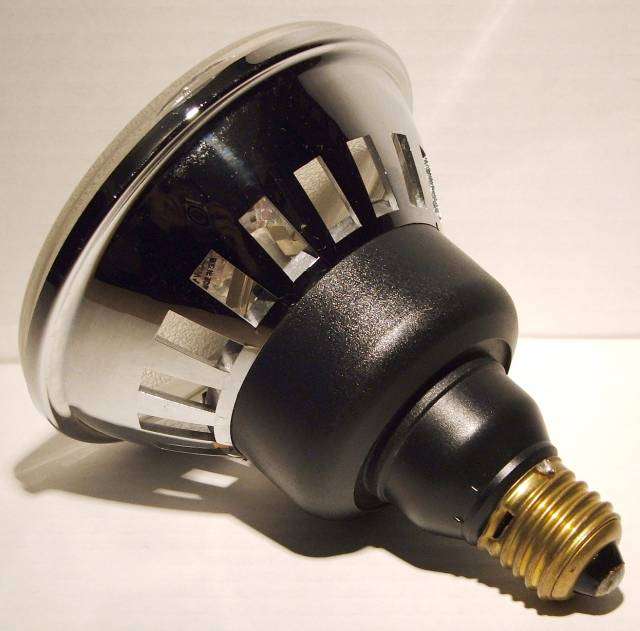
Economy Lighting Limited PAR38 to MR16 Retrofit Adapter - Overview of rear of unit
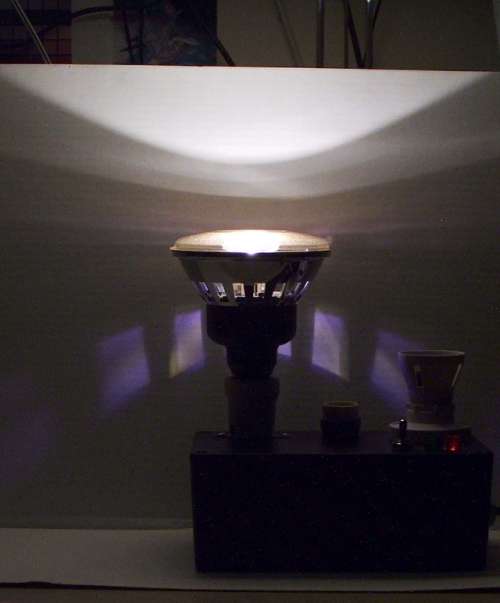
Economy Lighting Limited PAR38 to MR16 Retrofit Adapter - Overview of unit lit while fitted with a dichroic lamp
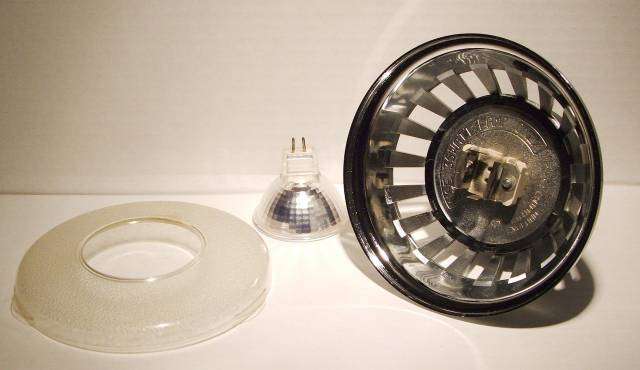
Economy Lighting Limited PAR38 to MR16 Retrofit Adapter - Unit shown with front cover and lamp removed
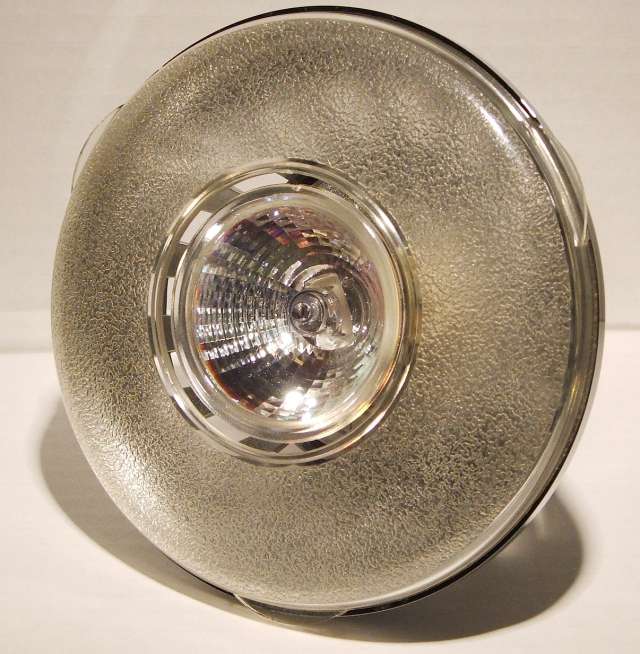
Economy Lighting Limited PAR38 to MR16 Retrofit Adapter - View of front of unit with cover and lamp installed
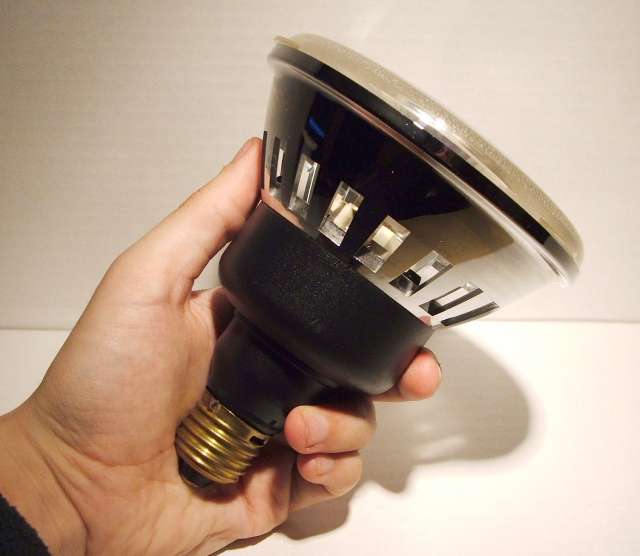
Economy Lighting Limited PAR38 to MR16 Retrofit Adapter - Unit held in hand to show relative scale
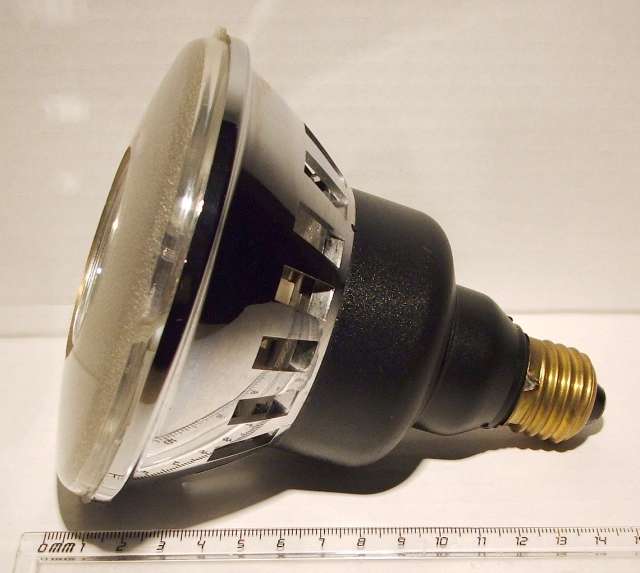
Economy Lighting Limited PAR38 to MR16 Retrofit Adapter - Unit displayed with ruler to show size
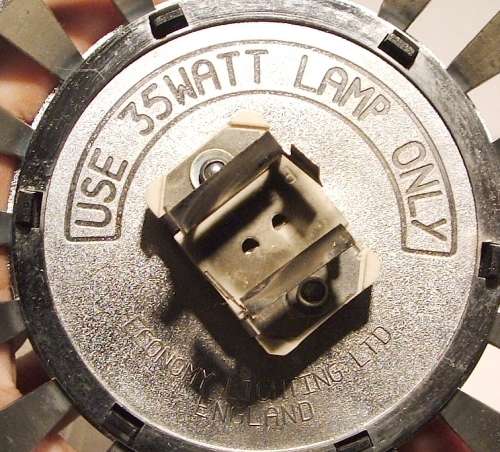
Economy Lighting Limited PAR38 to MR16 Retrofit Adapter - Detail of text stamped into body adjacent to lamp holder
Lamp added to the Virtual Display Shelf on Tuesday 13th March 2007 at 18:44.
References: None.
Acknowledgements: Many thanks to the website user who kindly donated this unit for display!
This page last updated:
17th June 2023: Made some page format changes to improve readability on mobile devices and some background code changes to improve search engine behaviour.